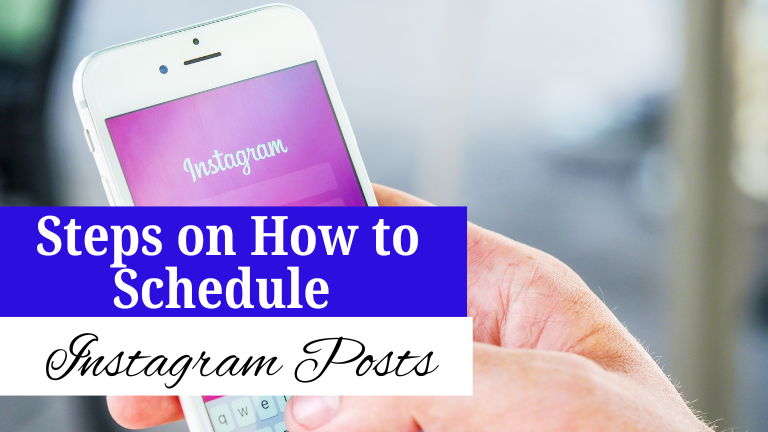Instagram has become one of the most powerful platforms for personal branding, business growth, and community engagement. However, consistently posting high-quality content at the right time can be a challenge—especially if you’re managing multiple accounts or running a business. That’s where scheduling Instagram posts comes in.
By scheduling posts in advance, you save time, stay consistent, and maintain a cohesive brand presence without feeling overwhelmed. In this blog, we’ll walk you through step-by-step instructions on how to schedule Instagram posts effectively.

Why Should You Schedule Instagram Posts?
Before diving into the steps, let’s look at why scheduling is important:
Consistency: Posting frequently keeps your audience aware of you.
Better timing: You can post when your audience is most active, even if you’re busy.
Timach.
Peace of mind: Free yourself from last-minute stress and focus on engagement.
Step 1: Define Your Content Strategy
Scheduling only works well if you have a clear plan. Ask yourself:
Who is my target audience?
What type of content resonates with them? (e.g., Reels, carousels, stories, or static posts)
How often should I post?
Once you have answers, create a content calendar. This calendar will outline your posting frequency, themes, and campaign ideas. For example:
Mondays: Motivational posts
Wednesdays: Behind-the-scenes content
Fridays: Product highlights
Step 2: Choose the Right Scheduling Tool
Instagram itself allows scheduling, but third-party tools offer more advanced features. Some popular tools include:
Meta Business Suite (Facebook and Instagram official tool)
Buffer
Later
Hootsuite
Planoly
When choosing, consider:
Ease of use
Analytics features
Cost (free vs paid plans)
Support for multiple platforms
Step 3: Create Your Content in Advance
Batch-creating content is key to effective scheduling. Prepare:
Captions: Craft captivating captions that align with the tone of your brand.
Hashtags: Look up and bookmark hashtag groups that are pertinent to your niche.
Images & Videos: Use tools like Canva or Adobe Express to design professional graphics.
Reels & Stories: Pre-record videos and save them for later scheduling.
Pro Tip: Save caption templates for recurring posts (e.g., weekly tips or promotions).
Step 4: Upload Content to Your Scheduling Tool
Once your content is ready:
1. Log in to your scheduling tool.
2. Connect your Instagram account (usually through Facebook login).
3. Upload the media (photos, videos, carousels).
4. Add captions, hashtags, and location tags.
Many tools also allow you to preview your Instagram grid, ensuring your feed looks visually appealing and consistent.
Step 5: Select the Best Posting Times
Your postings’ timing has a big impact on engagement. To determine the best times:
Check Instagram Insights → Audience → Active Times.
Try a variety of times to determine what is most effective.
Use your scheduling tool’s recommendations (many suggest optimal posting times based on analytics).
For example, if your audience is most active between 6–9 PM, schedule posts within that window.
Step 6: Schedule & Automate
Now comes the easiest part: scheduling your posts.
Select the date and time for each post.
Double-check captions, hashtags, and tagged accounts.
Confirm and schedule.
Some tools also let you set recurring reminders or auto-post Stories and Reels, depending on your plan.
Step 7: Monitor & Engage
Scheduling isn’t just about posting—it’s about building relationships. After your posts go live:Reply to comments and messages.
Engage with followers by liking and responding to their content.
Track performance through analytics (engagement rates, reach, saves, shares).
If a certain type of post gets more engagement, adjust your strategy accordingly.
Step 8: Review & Adjust Your Content Calendar
Every month, revisit your analytics to see what’s working. Questions to ask:
Which posts got the highest engagement?
Did my scheduled times work well?
Are my hashtags effective?
Should I post more videos or carousels?
Based on the data, refine your future content calendar for even better results.
Pro Tips for Scheduling Instagram Posts
1. Don’t Over-Schedule: While consistency is important, avoid spamming. Quality > quantity.
2. Leave Room for Spontaneity: Scheduled posts keep you consistent, but don’t ignore trending topics or real-time engagement.
3. Optimize Hashtags: To get the most exposure, combine popular and niche hashtags.
4. Cross-Promote: Repurpose your Instagram content for Facebook, TikTok, or LinkedIn.
5. Stay Authentic: Even though posts are pre-planned, make sure your captions and visuals feel genuine.
Final Thoughts
Learning how to schedule Instagram posts can transform the way you manage your online presence. It helps you stay consistent, engage at the right times, and free up your schedule for more creative and strategic work.
Whether you use Meta Business Suite or third-party tools like Later or Hootsuite, the steps remain the same:
1. Plan your content strategy.
2. Choose a scheduling tool.
3. Create and upload content.
4. Schedule at the right times.
5. Monitor, engage, and adjust.
By following these steps, you’ll not only maintain a strong Instagram presence but also build deeper connections with your audience while saving valuable time.
Recent Posts!
-
10 Content Ideas for Social Media Marketing
-
How to Start Affiliate Marketing for Beginners: A Step-by-Step Guide
-
Unlock Your Accounting Career with MWCedu Tally Prime Online Course in India
-
Types of Inbound Marketing Every Business Should Know
-
Why Blogging is Good for SEO: Unlocking the Power of Content
-
How to Start a Career in Digital Marketing: A Complete Guide
-
How to Generate Leads on Social Media: A Step-by-Step Guide
-
2025's Top Free SEO Tools to Improve Your Website
-
5 Powerful Ways to Grow on Pinterest in 2025
-
The Benefits of Blogging for Google Rankings, Your Website, and SEO

